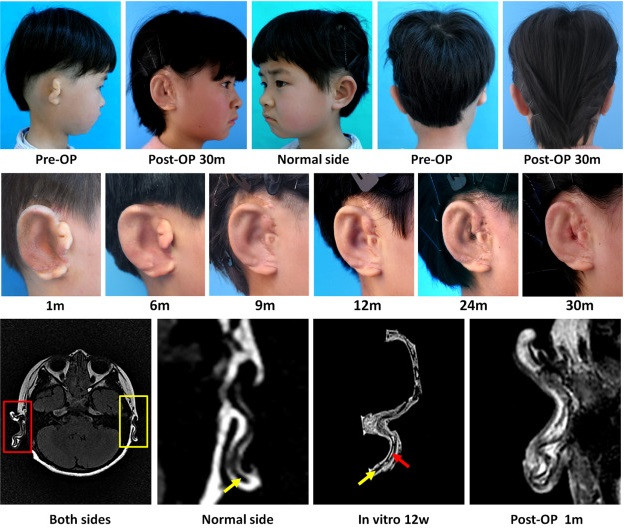Chinese scientists grow new ears for children with genetic defect
The children all have a condition known as microtia which impairs the development of the ear.

In a world first, Chinese scientists have grown new ears for five children with a genetic defect using advanced biomedical 3-D printing techniques.
The children all have a condition known as microtia which impairs the development of the ear and, in the worst cases, can lead to its total absence. Not only does the condition damage its functioning, it can negatively affect the psychological well-being of sufferers.
To create the new ears, researchers first took cartilage cells - known as chondrocytes - from the ears that were affected by microtia. They then scanned the healthy ears of the children – whose ages ranged from six to nine – and created a 3-D biodegradable 'scaffold' which mimicked the structure of the ears.
They then placed the chondrocyte cells on the biological scaffold and allowed them to grow for three months, resulting in a replacement ear that was then grafted on to the patients.
The children were monitored for up to two and a half years after the treatment, with the new ear developing as planned, although two of the cases showed slight distortions.
Despite this, the scientists noted that that their research was in its early stages and still a long way from being perfected as a treatment.
Normally, microtia – which affects around one in every 5,000 people – is treated by grafting an artificial 'plastic ear' onto the patient or using rib cartilage to create a new ear. But these approaches do not provide the same level of functioning, or the look of a normal ear.
Furthermore, the new method pioneered by the Chinese scientists could lead to new procedures for reconstructing other cartilaginous tissues.
"The delivery of shaped cartilage for the reconstruction of microtia has been a goal of the tissue engineering community for more than two decades," Lawrence Bonassar, a professor of biomedical engineering at Cornell University, who was not involved in the new study, told CNN.
"This work clearly shows tissue engineering approaches for reconstruction of the ear and other cartilaginous tissues will become a clinical reality very soon."
The new research is described in a paper published in the journal EBioMedicine which can be viewed here.





















